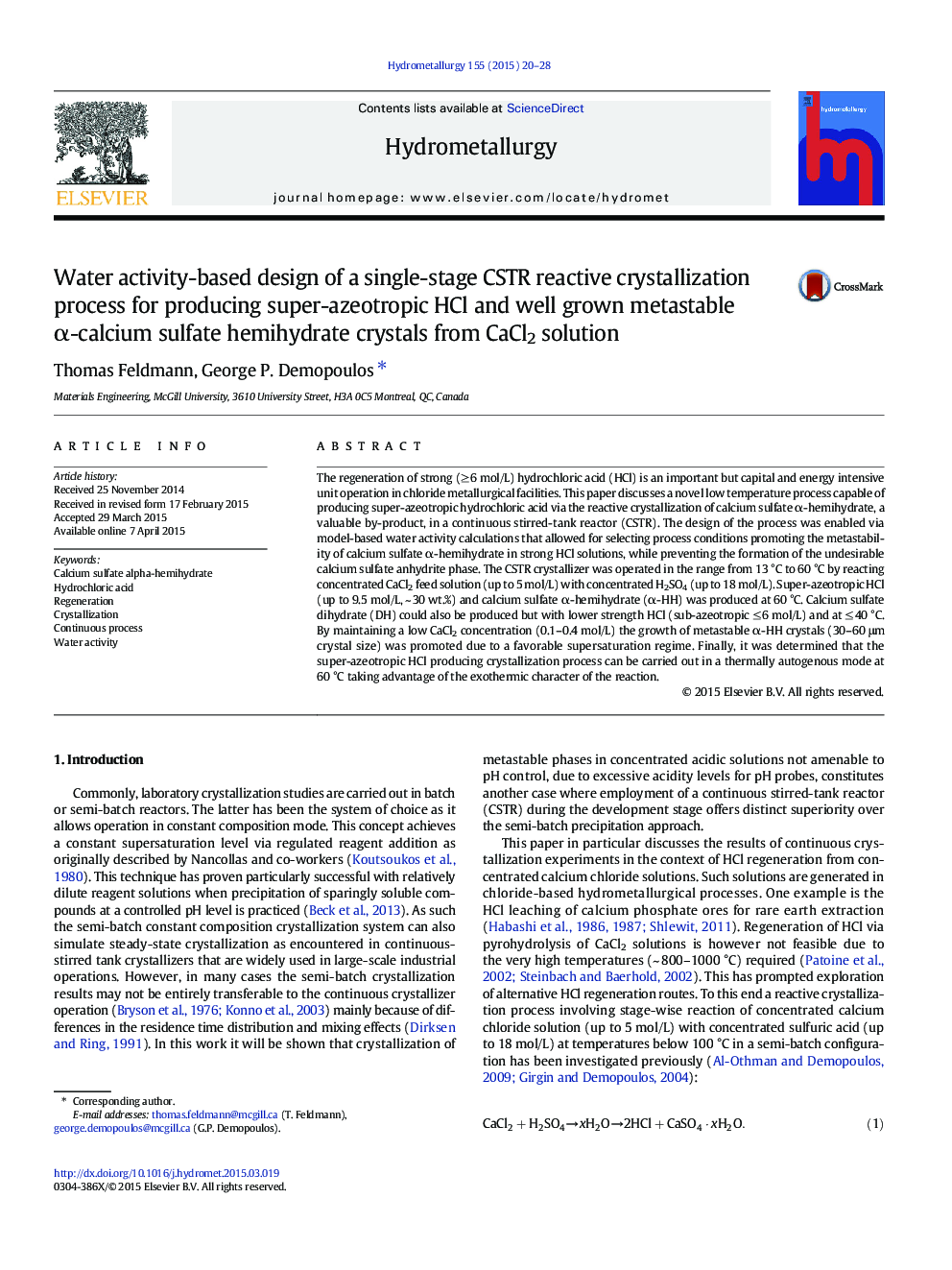| Article ID | Journal | Published Year | Pages | File Type |
|---|---|---|---|---|
| 211916 | Hydrometallurgy | 2015 | 9 Pages |
•Processing of CaCl2 solution into super-azeotropic HCl (~ 30%) and calcium sulfate solid•Continuous process achieved steady-state and was run stable for 7 h.•Particle size relates to steady-state calcium concentration in reactor.•Simple single-stage, continuous flowsheet was developed.•Flexible production of calcium sulfate dihydrate or α-hemihydrate is possible.
The regeneration of strong (≥ 6 mol/L) hydrochloric acid (HCl) is an important but capital and energy intensive unit operation in chloride metallurgical facilities. This paper discusses a novel low temperature process capable of producing super-azeotropic hydrochloric acid via the reactive crystallization of calcium sulfate α-hemihydrate, a valuable by-product, in a continuous stirred-tank reactor (CSTR). The design of the process was enabled via model-based water activity calculations that allowed for selecting process conditions promoting the metastability of calcium sulfate α-hemihydrate in strong HCl solutions, while preventing the formation of the undesirable calcium sulfate anhydrite phase. The CSTR crystallizer was operated in the range from 13 °C to 60 °C by reacting concentrated CaCl2 feed solution (up to 5 mol/L) with concentrated H2SO4 (up to 18 mol/L). Super-azeotropic HCl (up to 9.5 mol/L, ~ 30 wt.%) and calcium sulfate α-hemihydrate (α-HH) was produced at 60 °C. Calcium sulfate dihydrate (DH) could also be produced but with lower strength HCl (sub-azeotropic ≤ 6 mol/L) and at ≤ 40 °C. By maintaining a low CaCl2 concentration (0.1–0.4 mol/L) the growth of metastable α-HH crystals (30–60 μm crystal size) was promoted due to a favorable supersaturation regime. Finally, it was determined that the super-azeotropic HCl producing crystallization process can be carried out in a thermally autogenous mode at 60 °C taking advantage of the exothermic character of the reaction.
